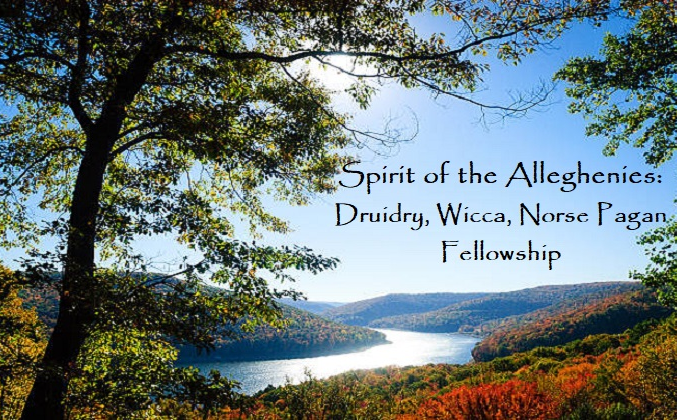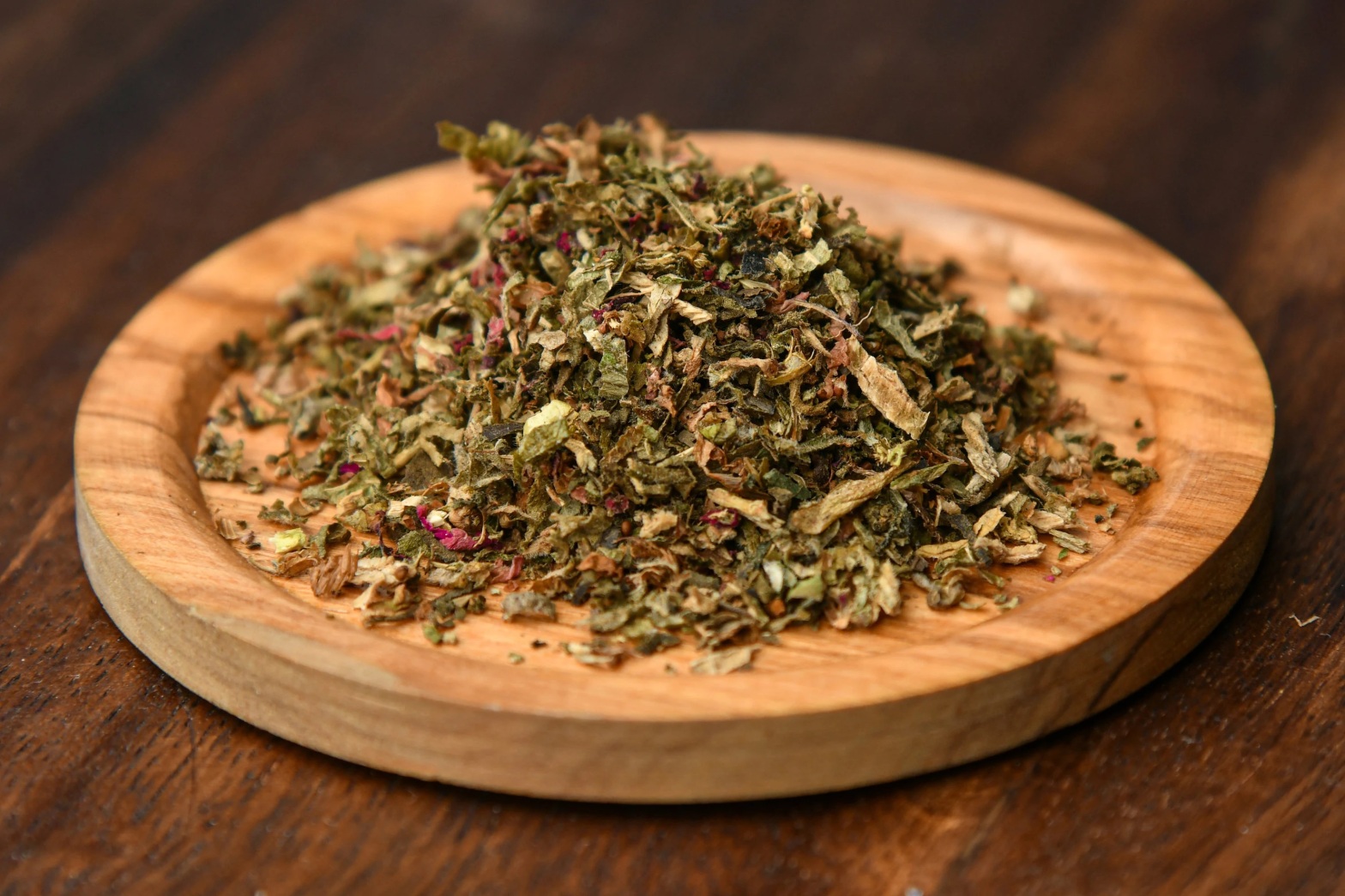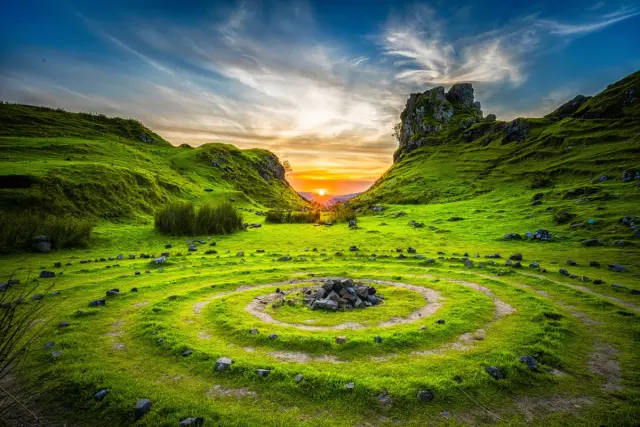Kinnickinnick is a blend of various dried herbs, barks, and leaves, each carefully selected for its aromatic qualities, medicinal properties, and symbolic significance. Traditionally, common ingredients include dried tobacco leaves, bearberry (also known as uva-ursi), red willow bark, and sometimes additional herbs such as mint, mullein, or sage. The specific ingredients used may vary dependingContinue reading “Kinnickinnick”
Tag Archives: Druid
White Sage
One of the Four Sacred Herbs of the Anishinabe Ojibway, indigenous tribes across North America use White Sage ceremonially and as a medicinal plant. The aromatic smoke of White Sage is believed to carry prayers and intentions to the heavens, invoking spiritual guidance and protection for oneself and the community. The leaves are dried andContinue reading “White Sage”
Sweetgrass
Sweetgrass (Hierochloe odorata) is a very hardy perennial, able to grow in the Arctic Circle. The base of the leaf, just below the soil surface, is broad and white, without hairs; the underside of the leaf is shiny and glabrous. One of the Four Sacred Herbs of the Anishinabe Ojibway, Sweetgrass is revered by manyContinue reading “Sweetgrass”
Tobacco
One of the Four Sacred Herbs of the Anishinabe Ojibwe, Tobacco is used to communicate with the Spirit World and to show respect to elders, teachers, and community leaders. When the leaves are dried and smoked in the ceremonial pipe, the smoke carries our prayers and intentions through the Hole in the Day to theContinue reading “Tobacco”
Red Willow
Red Willow, also known as Red-Osier Dogwood, is a medium deciduous shrub with red branches and twigs. One of the primary traditional uses of Red Willow lies in its analgesic properties. The bark of Red Willow contains salicin, a natural compound akin to aspirin, which serves as a potent pain reliever. Indigenous communities use RedContinue reading “Red Willow”
Bearberry
Bearberry (Arctostaphylos uva-ursi) is a low-lying shrub that grows predominantly in soils composed of sand, gravel, or dunes in boreal forests. When smoked in a pipe, or when steeped as tea, bearberry leaves have a calming effect on the nervous system and are used to cure anxiety, migraine headaches, and general pain. Smoking is theContinue reading “Bearberry”
The Eagle on the Cliff
Am iolar i n-aill (Irish Gaelic)Om eller ih-n aisle (Phonetic) “I am the eagle on the cliff” ~ Amergin “He clasps the crag with crooked hands;Close to the sun in lonely lands,Ring’d with the azure world, he stands.The wrinkled sea beneath him crawls;He watches from his mountain walls,And like a thunderbolt he falls.”~ “The Eagle”Continue reading “The Eagle on the Cliff”
Casting the Druid Circle
The ceremonial circle is a timeless symbol of sacred space and spiritual protection. Within Druidry, the act of casting a circle is a foundational practice that connects one with nature, harmonizes energies, and provides a haven for ritual work. The author is a Druid in the Order of Bards, Ovates, and Druids, and his workContinue reading “Casting the Druid Circle”
Goddess Rosary
In this post, we are reclaiming the Roman Catholic rosary as a tool for worshiping the Goddess in modern pagan traditions. In the Roman Catholicism, the rosary is a devout and widely practiced form of prayer, consisting of a sequence of meditations that revolve around the repetition of the Hail Mary and Our Father prayers,Continue reading “Goddess Rosary”
Cernunnos
The tapestry of ancient Celtic mythology is adorned with a myriad of fascinating and enigmatic deities, each representing different facets of nature, life, and the cosmos. Among these, Cernunnos, whose Gaelic name translates to, ‘Horned One,’ stands as a symbol of fertility, nature, and the untamed wild. Who is Cernunnos? In his seminal essay onContinue reading “Cernunnos”
A Journey Around the Caim Part 3
Walking the Caim The most effective way to utilize the Caim is to walk the sacred circle. Those familiar with nature-based spiritualities will be familiar with this concept, but we are now performing it with the therapeutic approaches explained in the second article. Gather markers to place at the four directional points and at theContinue reading “A Journey Around the Caim Part 3”
Mint
There are over 600 kinds of mint worldwide. The tell-tale way of determining whether a plant is in the mint family is by the smell of the torn leaves. Mints have square stems, oblong leaves that taper to a narrow tip, with toothed edges. They vary from dark green to light green.” With its invigoratingContinue reading “Mint”
A Journey Around the Caim Part 2
Modern Psychology & Caim Before giving the teaching on walking the caim, it will be useful to understand how modern psychology intersects with the ancient caim teachings. As a psychiatric technician at our regional medical facility, Warren General Hospital, I conduct therapy groups in our acute care inpatient mental health unit. I developed a therapyContinue reading “A Journey Around the Caim Part 2”
Stag ~ Gaelic: Damh (Dav [like Have]) / Norse: Steggi (Stay-gee)
Perhaps the most important prey animal hunted in ancient times, the stag served as a great provider for our ancestors. His hide covered our earliest homes and provided material for clothing, his meat sustained us during the difficult winter months, and his bones were fashioned into tools both sacred and ordinary. Celtic Symbolism: “IContinue reading “Stag ~ Gaelic: Damh (Dav [like Have]) / Norse: Steggi (Stay-gee)”
The Stag of Seven Tines
Am damh seacht bean (Irish Gaelic)Om dah-v shocked be-yawn (Phonetic) “I am the stag of seven tines.” The fourth line in Amergin’s spell-poem invokes the imagery of the majestic stag, which is fast, powerful, and sexually potent. An enduring symbol of royalty, stags represent power united with grace, and authority wed with dignity and integrity.Continue reading “The Stag of Seven Tines”
A Journey Around the Caim
The Irish Gaelic word Caim (pronounced Kime like Lime) means “Protection” or “Sanctuary”, a magical circle which guards one from harm. Each of the cardinal directions were understood to possess sacred associations relating to natural cycles such as the seasons, the four elements, the four quarters of the moon, the four ages of human life,Continue reading “A Journey Around the Caim”
Brighid
Brighid is the Celtic Triple Goddess of Smithcraft, Healing, and Poetry. She is connected to the elements water and fire. As a master smith, Brighid combines the awesome power of fire to forge metal and then quenches her creation in a basin of cool water. This same alchemical combination of fire water is practiced inContinue reading “Brighid”
Raven ~ Norse: Hrafn (H-ray-fen) / Gaelic: Bran (Bran)
Norse Symbolism In Norse mythology and culture, ravens played a significant role, serving as symbols of intelligence, wisdom, power, prophecy, and as messengers of the gods. Despite their association with death, ravens were seen as powerful protectors and guardians. It was believed that if a raven perched on a person’s home or property, that personContinue reading “Raven ~ Norse: Hrafn (H-ray-fen) / Gaelic: Bran (Bran)”
Origin of Ogham?
How did the Ogham script originate? In this post, I will put forward an origin theory for Ogham. Though controversial, this theory makes the most intuitive sense to me. In 1948, English poet Robert Graves published his landmark book The White Goddess, in which he linked the Welsh legend Cad Goddeu or Battle of theContinue reading “Origin of Ogham?”
The Battle of the Trees
Long before the arrival of the Celtic race on Albion’s fair shore, the children of Dôn, the Great Mother Goddess, and her consort Beli, the bright Sunlight, lived and prospered in the Kingdom of Cymru (Wales). The Goddess and the God had one daughter named Arianrhod, whose name means ‘Silver Wheel’, for her province isContinue reading “The Battle of the Trees”





